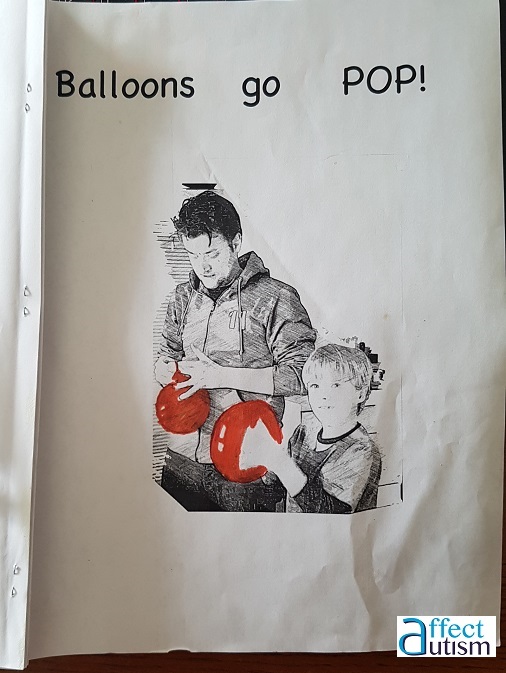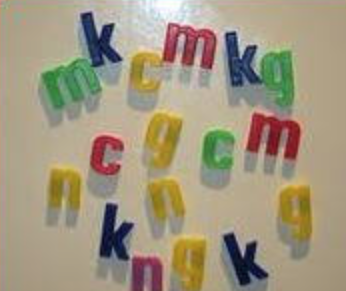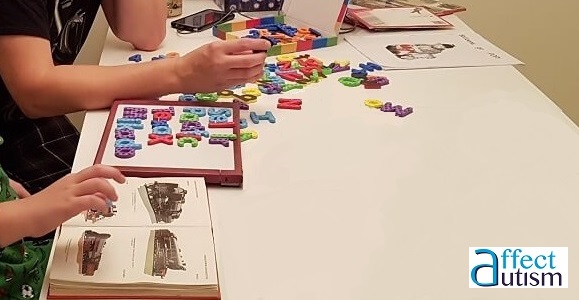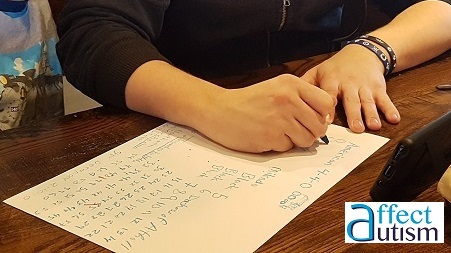Up until now our son has only had foundation academics. He does not yet read nor write. He has only recently begun to have an interest in holding a crayon/marker/pencil, uses a full fist grip, and scribbles, pressing very hard. If corrected, he will maintain the grip we show him, but it’s very challenging for him to do anything but scribble back and forth, or in circular motions.
In the past year, though, he has started to show a growing interest in reading. We call this ‘readiness’. He points out letters and numbers whenever he sees them on signs or cars. He’s had some introduction to literacy at school where they have cut out big letters, one here and there, to focus on recognition, and have helped him finger-write letters in shaving cream. Most recently, his desire to spell has become quite intense! This week, I begin to document our attempts at teaching him to read.
At the start of the school year this past September, I let the school know that we wanted to begin early literacy. Here were some notes from his main therapist:
- 9/12: He took part in an activity that helps to improve his ability to recognize letters. The children had to match the letters given to them to the letters on the wall. He needed a few reminders to help him stay on task but did an amazing job and completed his part.
- 9/26: We worked on forming the letter ‘A’ in shaving cream and sand. He was excited to play with shaving cream and specifically asked to write letters in it! With support he is able to write some letters in shaving cream by following my finger. During assessments I noticed that he had a hard time identifying lowercase letters, so today we practiced the letter ‘a’” I will continue practicing the letters (one or two at a time) until he is able to identify them in books and will then move on to practicing others. I found that writing them together and saying “Mama ‘A’ and baby ‘a’” really helped.
- 9/27: He requested to write names in shaving cream which made for a great opportunity to practice identifying lower case letters!
- 10/5: He is beginning to show an interest in writing letters. He often asks me to write names of teachers and friends on paper or on the wall with shaving cream. He is also willing to let his teachers provide him with hand over hand support to write them or he sometimes prefers to hold the teachers hand.
Reading Recovery
Reading Recovery is a one-on-one, individualized, developmental approach to reading, typically for first graders in a public school setting who are falling behind their classroom peers. Reading Recovery is in line with DIR/Floortime in its philosophy in that it is developmental, individualized, and follows the child’s interests.
When I consulted with former colleagues of mine at the training level, they had some positive feedback for me, based on videos I shared with them of my son:
It is obvious that your son has good control over verbal language. That stands him in good stead for learning to read and write. It would seem that his biggest challenge is attention. He will require a very knowledgeable Reading Recovery teacher who is able to contingently respond to him, follow his lead and build on his strengths. I don’t know of any other initiative or approach that would meet his needs to the same degree as Reading Recovery would.
Most approaches that will be available will be commercial products that focus on skill building. This is also the same approach favored in many special education settings. In my experience, children like your son work most successfully in Reading Recovery where the instruction is 1:1 and focuses on building literacy processing strengths within the context of continuous text.
The key to success is focusing on continuous text in reading and writing (using real literature and composing real stories at the right level for the child’s level of understanding and problem-solving competencies). Helping your son understand the component parts (anticipated meaning, patterning of language/structure, and letter/sound relationships) at his point of need as you help him learn how to approach, understand and compose texts is what is required.
This is not an easy journey, but if you can access the expert help you need (a really good, insightful RR teacher who understands and responds to his individual needs) you will have the best chance of success.
Disclaimer
I shared all of this information and some videos with our early literacy expert prior to our first visit. On October 12th, she sent us a book that she made pulling screenshots from this Floortime video from this blog post of my husband and son popping water balloons. She transformed them into line drawings. The idea was to simplify the picture so that the attention to print can more readily be harnessed.
Our first visit with our early literacy expert occurred on October 6th. She brought a small magnetic board with letters that spelled our son’s name and “Dad”.




She pointed out to us how he said the words written on the page simply by looking at the pictures, and that’s what she wanted: the sentence structure met him where he is at developmentally. That is, the sentence matched his own speech production because he said, “(His name) is wet!” when the text read, “(His name) is all wet too!”
Apprentice his attention to sequence of letters in known words (his name)
- Make his name with magnetic letters. As you build his name say what letter comes first. Invite him to help with the sequence. Say what letter comes last.
- Eventually jumble the letters and invite him to build his name. Turn it into a game by having him race (you build his name and let him build his name at the same time).
- When reading ‘his’ story, ask him to find his name.
- Make his name on a large piece of cardboard. Cut it into 2 or 3 large puzzle pieces. Ask him to put it together again.
- Edge him closer to finding other words in ‘his’ story (e.g., which word do you think says ‘Dad’). Make ‘Dad’ with the magnetic letters.
Apprentice his attention to letters
- On a magnetic board (standing at the fridge will help), place multiple copies of the letters in his name in an array, as shown in the example.
- Ask him to find all the ‘m’ letters, then the ‘c’ letters, etc.
- Eventually add new letters to the array (e.g., ‘D’ and ‘a’ from ‘Dad’).


- Read simple books to learn that words are permanent, are represented by what are likely to be clustered squiggles to him, and that written language goes left to right and top to bottom. As you read, demonstrate pointing and matching. Pause so he chimes in at appropriate spots (e.g., last word in a phrase). Start to draw his attention to other words that start with the same letter as his name.
- Read Simple books to help him match ideas to words. For example, when reading the book called “Baby”, read : “Baby is…” Entice him to say what baby is doing by searching the picture. Acknowledge when he knows what the words say, emphasizing that he’s thinking about what would make sense. Point to the word yourself, block it with your fingers and say: “Yes, that says drinking.”

Sign up to our Patreon page to see the video



We also focused on reading the little books from start to finish, rather than letting our son randomly flip through the pages. Learning about the beginning, middle, and end, in general, is one of the aspects of the fourth functional emotional developmental capacity where children understand there’s a start, middle, and end to a game as motor planning and sequencing develop. So this made a lot of sense to me to apply this principle in reading.
It is also clear that his engagement is not robust when we’re not following his interests, and the semi-structured activity becomes a bit of a chore for him. Once we make some books ourselves about his trains and experiences with trains, we imagine he will be far more interested!
Until next week… here’s to affecting autism through playful interactions!



